I’m the first to admit that knitting a washcloth sounds a touch absurd, especially since you can go out and buy a dozen lickety split. But don’t knock it until you’ve tried it. Washcloths are the perfect canvas for trying out new stitches. They’re quick to knit and make the perfect gift, especially when paired with a bar of fancy soap. The only downside? Knitting with cotton yarn can be a bit rough as it doesn’t have the same stretch as wool.
Today we’re sharing ideas for five washcloths including the full pattern for this cute-as-a-button lamb. Pick up the supplies this weekend and you’ll have plenty of time to knit a few lambs for Easter baskets!
Supplies
- cotton yarn
- 1 pair of US7 needles
General Washcloth Formula
- Pick your stitch. For washcloths I pick out a knit stitch I want to try and surround it with a garter stitch boarder. When you’re looking through a stitch dictionary, they will always tell you how many stitches to cast on for each stitch (it may look something like this: cast on “an odd number”, “multiple of 3”, “multiple of 4 + 1”, you get the idea).
- Cast on. I cast on anywhere from 32-40 stitches, the actual number depending upon the stitch pattern plus 6 or 8 more stitches to give the washcloth a boarder of three or four stitches on each side.
- Start knitting. Knit the first 6 or so rows to create the garter stitch boarder on the bottom, then start the pattern, remembering to start and end the pattern rows with the garter boarder. Once my washcloth is almost square, I finish it off with the final 6 rows of garter stitch. Bind off, and you’re done, unless you want to add a loop!
- Add a loop? If you want to add a loop to your washcloth, when binding off, keep the last three stitches on your needle. Using two double pointed (or one circular needle), knit about four inches of I-cord. Bind off, and stitch the end of the I-cord to the beginning to create the loop.
Adding an I-cord loop to one corner for hanging up my washcloth is something I just recently started doing, and I think it’s a cute little detail. Of course, in the case of the sheep, it’s necessary or else he wouldn’t have a tail!
Now that you have the basic formula, below are five stitch patterns that we think make great washcloths. We picked a nice selection of interesting stitches that cover every skill-level from beginning to advanced knitter. These stitches also create a variety of final washclothes from the sleek zigzag stockinette to the extra thick and textured bee stitch. Knit them all and you’re bound to fall in love with a new washcloth. One more thing ~ remember that washcloths are very forgiving projects, just cast on your stitches and have fun!
Zigzag Stockinette
Pattern is worked over any number of stitches and two rows.
- Row 1 : knit all stitches through the back of the loop
- Row 2 : purl all stitches
- Repeat rows 1 and 2 until you reach your desired length
Textured Rib
Pattern is worked over a multiple of 3 stitches +1 and two rows.
- Row 1 : Knit all stitches
- Row 2 : *Knit 1, purl 2. Repeat from * until the end of your row.
Honeycomb Stitch
Pattern is worked over four stitches and eight rows. Requires a cable needle or double-pointed needle, or ability to do the cabling without a special needle.
- Row 1: *Place first stitch on your cable needle and hold to back. Knit one stitch from left needle, knit stitch from cable needle. Place next stitch on cable needle and hold to front. Knit one stitch from left needle, knit stitch from cable needle. Repeat from * until the end of your row.
- Rows 2,4,6,8: Purl all stitches
- Row 3: Knit all stitches
- Row 5: *Place first stitch on cable needle and hold to front. Knit one stitch from left needle, knit stitch from cable needle. Place next stitch on cable needle and hold to back. Knit one stitch from left needle, knit stitch from cable needle. Repeat from * until the end of your row.
- Row 7: Knit all stitches
Bee Stitch
Pattern is worked over an odd number of stitches and four rows. The “knit 1 below” instructions in this stitch can be difficult to understand but is surprisingly easy once you learn. Watching these step by step instructions will help.
- Row 1 : Knit all stitches.
- Row 2 : Knit 1 stitch. *Knit 1 into the stitch below your next stitch (dropping your next stitch off the needle), knit 1, repeat from * to the end of your row.
- Row 3 : Knit all stitches
- Row 4 : Knit 2 stitches. Knit 1 below, knit 1, repeat from * to the last two stitches, Knit 2.
Loop Stitch
Pattern is worked over two stitches and four rows.
- Row 1 : *Knit 1 stitch, make a loop (see instructions below). Repeat from * to the end of your row.
- Row 2 : Knit all stitches
- Row 3 : *Make a loop, knit 1. Repeat from * to the end of your row.
- Row 4 : Knit all stitches
- Making the Loop : K1, but don’t drop the stitch from the left needle. Bring your yarn between the needles to the front of your work. Hold your left thumb in front of work and wrap the yarn around your thumb to create a loop that is approximately 1 inch long (I like to err on the side of a shorter loop, there are no rules!). Take the yarn between needles to the back of your work and knit into the same stitch, dropping the stitch from the left needle as usual. Create a loop around the right needle by bringing the yarn forward, this time over the right needle then send it to the back between the needles. Pass the two stitches just worked over this loop. One loop has been created.
Now for that cute lamb! The lamb washcloth uses the loop stitch you just learned for the fluffy body. There is no garter stitch border on this cloth, but we include a stockinette square on the top right corner that becomes the lamb’s face. As I mentioned above, you’ll want to make the final loop on this cloth because it doubles as the lamb’s tail. And finally, the pattern includes notes to add ears to the lamb, but truthfully, the lamb is just as cute with our without the ears, so you can skip that step if you’re feeling the Easter rush.
Rather than write the pattern out in this post, it’s available as a downloadable PDF right here. Click here for the original pattern page on Ravelry. I made this pattern a few years ago, after knitting the lion washcloth published on Knitty. So if you enjoy making those loops, knit a lion too!

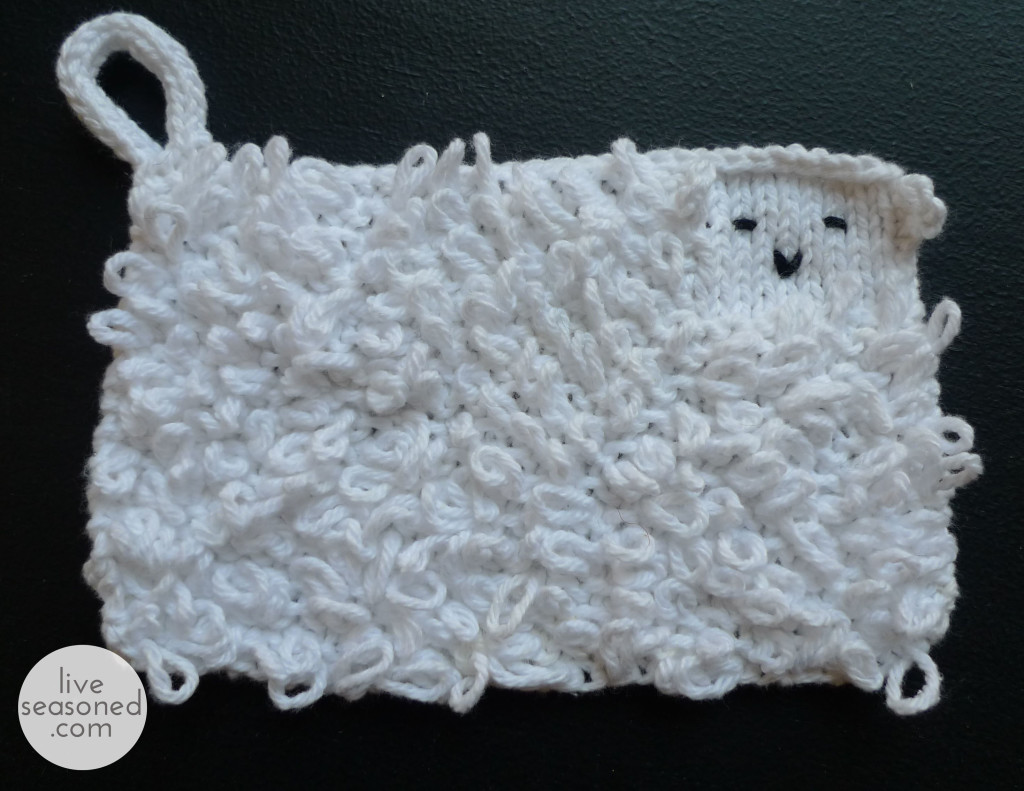
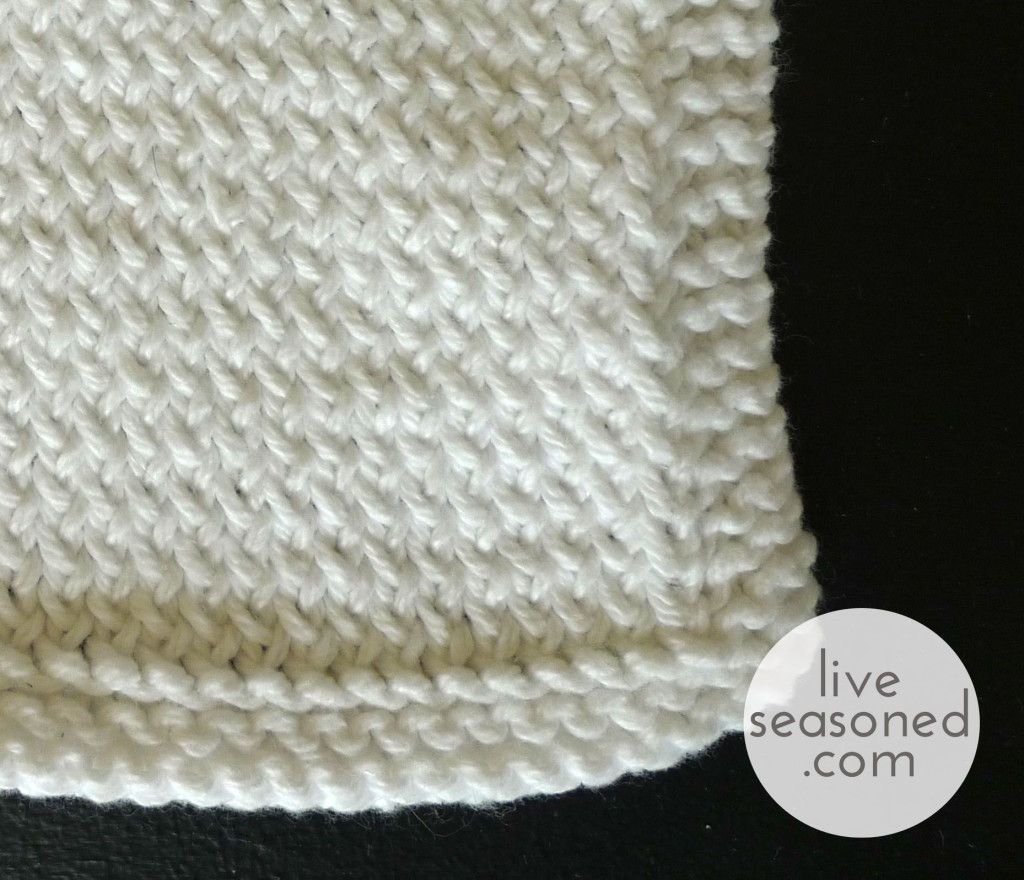
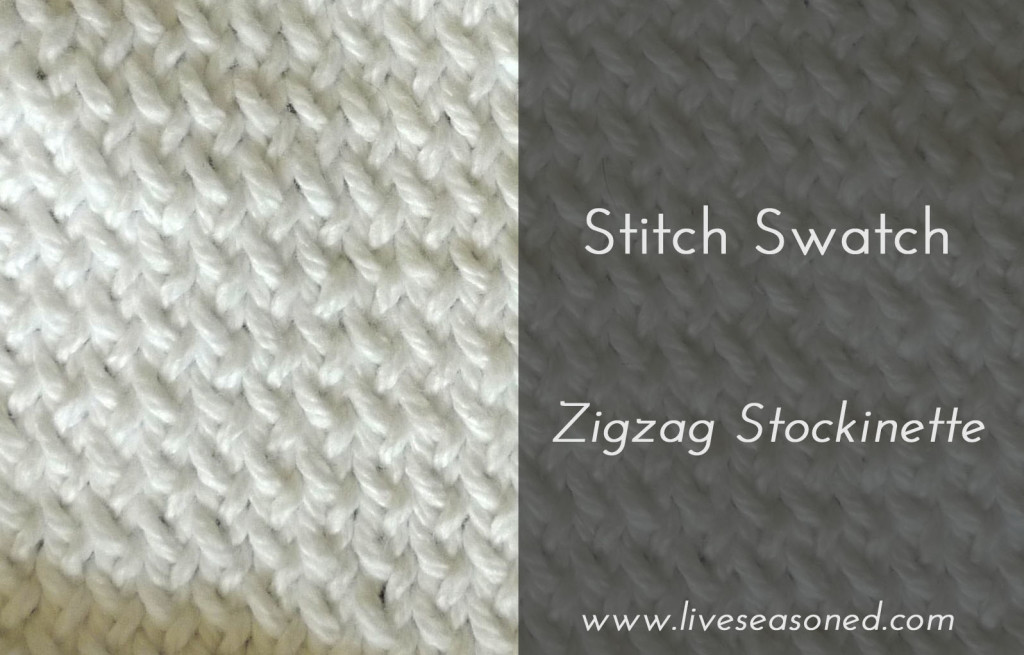
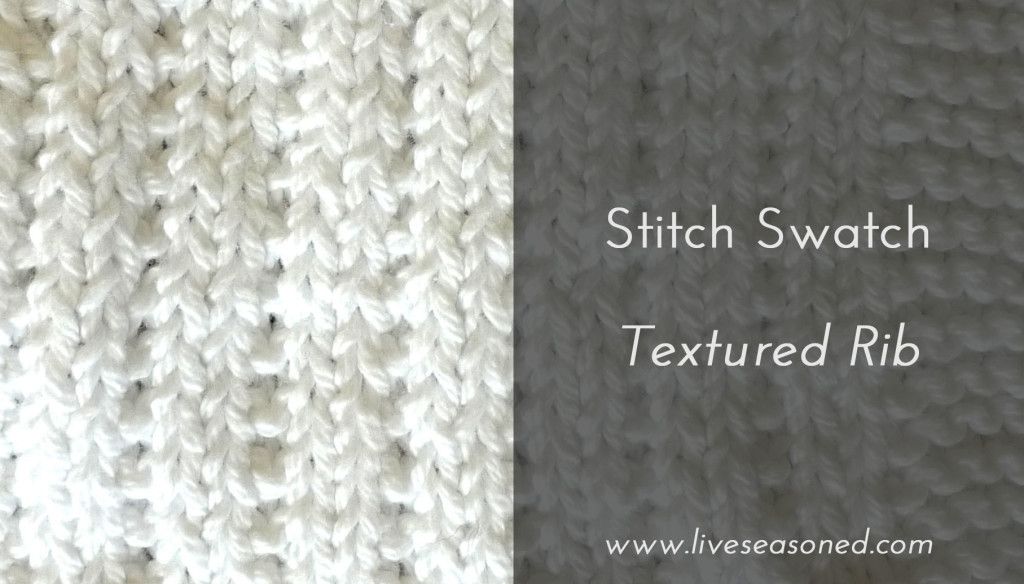
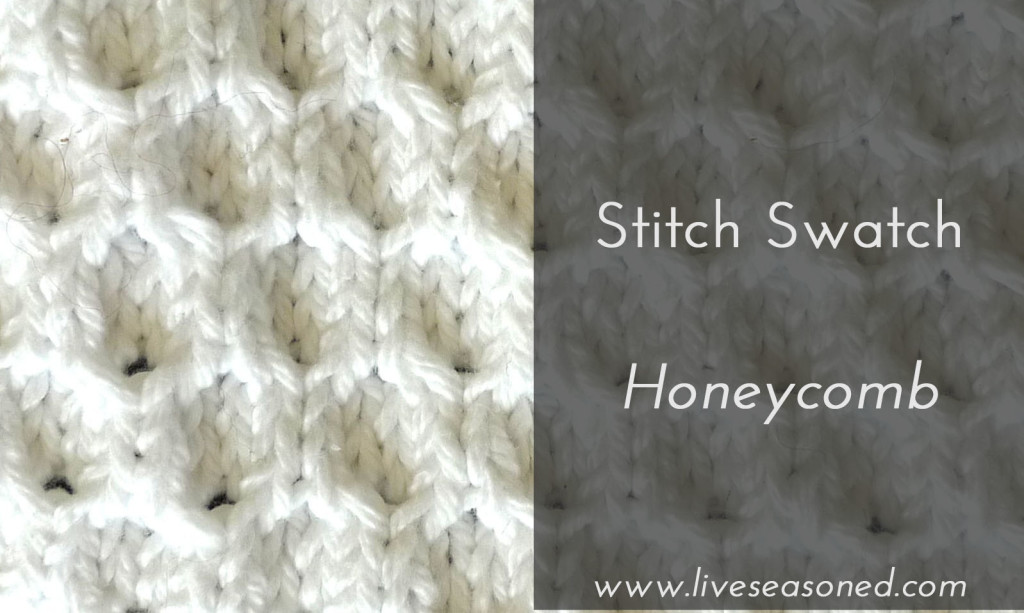
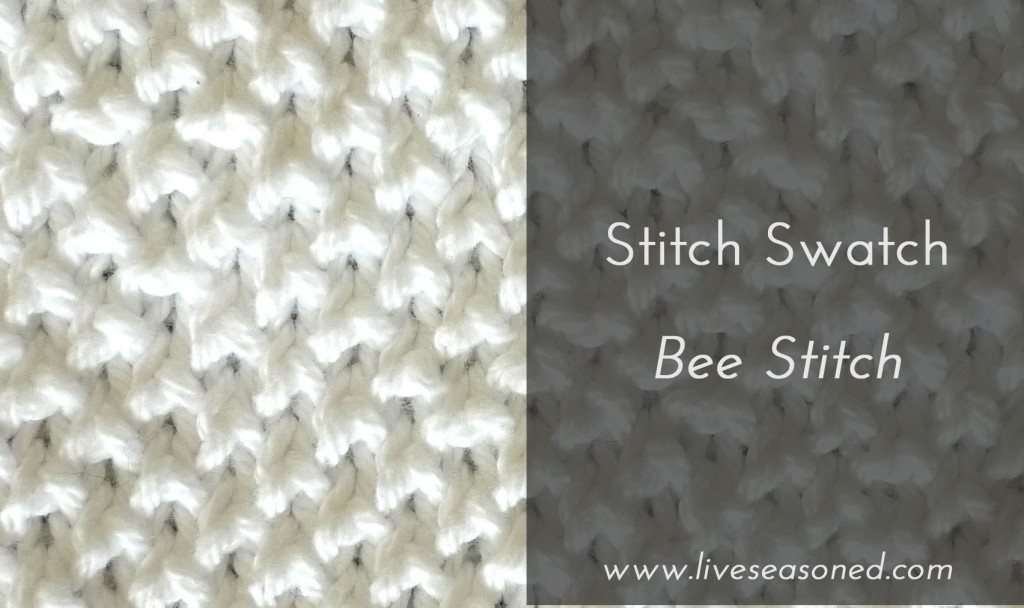
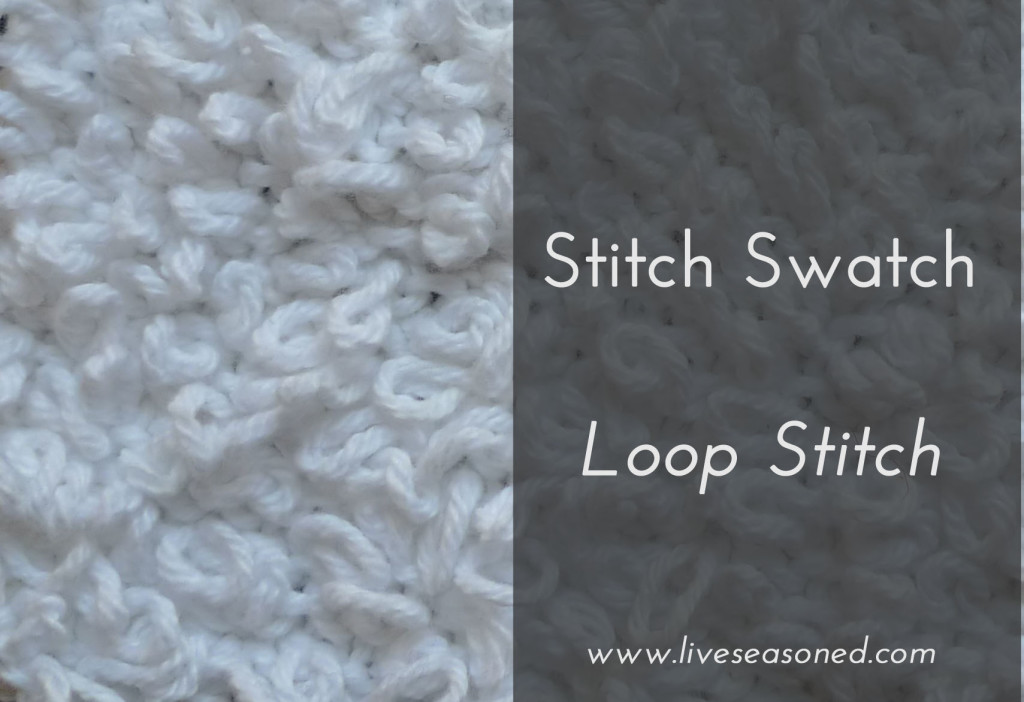

Hello-While looking for a site on how to put an I cord on my washcloths I came across your adorable sheep. Thank you for the specifics along with the links to create animal washcloths. What brand of cotton you use? Thank you.
Warm Regards-
Jill
Hi Jill,
I’m glad you like the sheep washcloth! I think my favorite cotton yarn is Blue Sky Alpaca’s Cotton, but I often use Lily Sugar’n Cream, and I recently placed an order for a cotton-linen blend from Knit Picks to use for some summer tops. But I still find that no matter which cotton I’m using, they all are a bit hard to knit with especially when compared to animal fibers. Do you have any particular favorites?
Happy knitting!
-Katie
Thanks for your blog and your knitting posts! I’ve had some family members in the hospital and knitting washcloths has become a frequent way to pass time. I love your lamb! I’m in a knitting / needlework group and I’ll share your website with them.
Hi Michelle, I’m glad you’re enjoying the posts, and thank you for the kind words! Knitting is such a great way to pass the time in waiting rooms and visiting family – you’ll never be bored and it can help when your hands (and mind) are anxious. Plus the washcloths paired with a nice bar of soap make a great gift, especially for those hard-working nurses. Happy knitting! -Katie